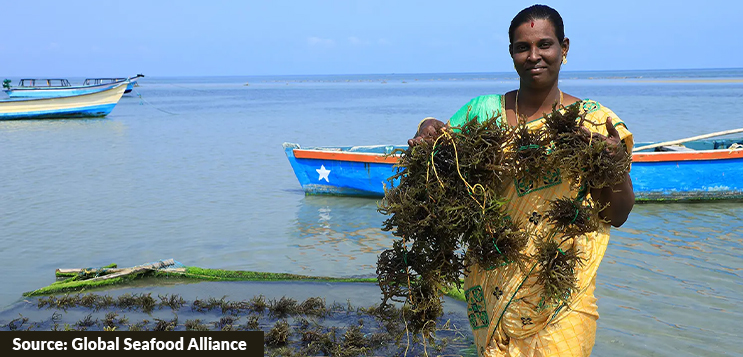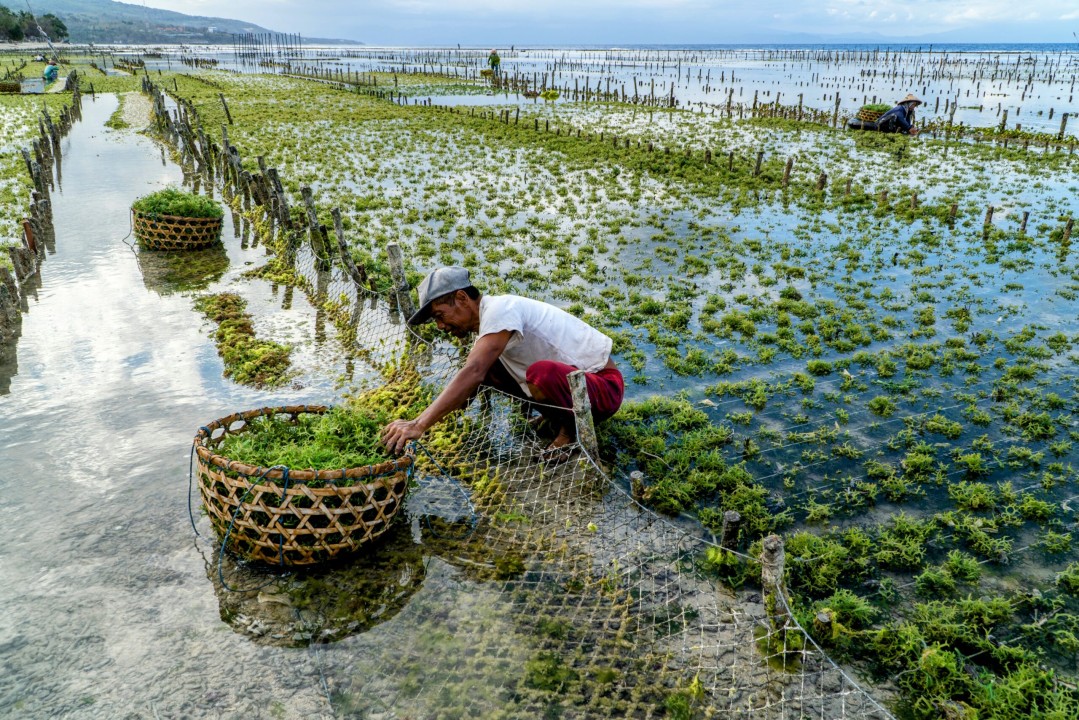
In a world overwhelmed by plastic waste, the sea may be our most unexpected saviour.
India, which generates over 62 million tonnes of waste annually, is no stranger to the mounting environmental burden of plastic. Choked landfills, polluted coastlines and vast acres of plastic islands floating on the sea, all highlight the massive challenge we are facing right now.
However, what if something that floats below the surface, both literally and figuratively, could be the solution?
Once primarily seen as marine fodder or a gelling agent in food, seaweed is now emerging as a viable, biodegradable alternative to fossil-fuel-derived plastics, particularly in the packaging industry. The material degrades within weeks, leaves no toxic residue or microplastics, and is sourced from a fast-growing, renewable biomass. Furthermore, it needs no freshwater, fertilisers, or even arable land. In fact, cultivating seaweed actually sequesters carbon and purifies the ocean.
So, the question is, can seaweed be the magical plastic alternative?
How does seaweed packaging work?
Seaweed isn’t one uniform material. It spans red, brown, and green algae, each with its own biopolymer properties. For example, red species like Kappaphycus alvarezii and Gracilaria edulis yield carrageenan (an alternative to gelatin), while brown algae like Sargassum provide alginate, a building block for bioplastics.
These different varieties of polysaccharides are extracted, mixed with natural plasticisers like glycerol or potato starch, and engineered into films, coatings, or even moulded into new products.
The result? You get a range of packaging materials that can be grease-proof, water-resistant, compostable, and even edible. Some of these seaweed bioplastics are already making their way into food delivery, FMCG, and personal care industries across India.
Research institutions like CSIR-CSMCRI and ICAR-CIFT are also developing antimicrobial and edible films that suit Indian climate conditions.
Seaweed packaging innovations in India
Using seaweed as a sustainable alternative to plastic has already started reaping the rewards. There are several home grown Indian companies who are working on this new technology.
Zerocircle (Pune): Founded by Neha Jain, this startup has pioneered marine-degradable, edible packaging made from locally farmed seaweed. Their seaweed films and coatings are microplastic-free, PFAS-free, and fully compostable, and are used in burger boxes for food delivery platform, Swiggy. Zerocircle works closely with seaweed farmers in Gujarat and Tamil Nadu, ensuring local livelihoods rise with the tide.
Sea6 Energy (Bangalore): Known for its automated ocean farming tech, Sea6 Energy is working on seaweed-based straws, films, and compostable coatings for food packaging. Their work is crucial in making seaweed farming both scalable and sustainable.
Go Do Good (Pune): Led by Khushboo Gandhi, this startup combines seaweed with agro-waste like mango peel to create innovative materials including eco-friendly inks and bubble wrap.
CSIR-CSMCRI (Gujarat): This research institute has developed seaweed packaging films and edible cutlery. Their antimicrobial and heat-sealable formulations are tailored for Indian food packaging needs.

Benefits of using seaweed packaging over plastic
Seaweed packaging has the potential to solve the waste problem associated with plastics and also adds value across the entire ecosystem:
- Climate Action: Seaweed absorbs carbon up to 20 times faster than land forests, helping fight ocean acidification and climate change.
- No Land or Water Competition: Unlike corn-based bioplastics, seaweed doesn’t compete with food crops for space or irrigation.
- Zero-Waste Philosophy: Some forms are edible, others compost into soil, but all of them ensure that nothing lingers for centuries in landfills.
- Livelihoods: With proper support, seaweed farming can transform coastal communities that are facing economic challenges due to climate change. In Tamil Nadu and Gujarat, it’s already providing sustainable income to fisherwomen and artisanal fishers.
- Bioenergy and Ocean Health: Large-scale cultivation can reduce harmful algal blooms, enhance ocean productivity, and provide feedstock for bio-ethanol.
Challenges of using seaweed as a plastic alternative
While the promise of seaweed packaging is enormous, the path ahead is not without hurdles. Costs remain higher than conventional plastics, performance limitations persist in some applications, and India’s seaweed cultivation and processing infrastructure is still in its infancy.
This is especially striking when we consider that, despite having a 7,500 km coastline and immense marine biodiversity, India contributes just 0.01–0.02% of global seaweed production. On the other hand, countries like China and Indonesia contribute 57% and 28%, respectively. Commercial-scale seaweed farming remains largely untapped in India.
However, the potential is transformative. According to Press Information Bureau, cultivating just 5% of India’s Exclusive Economic Zone, around 10 million hectares, could generate 6.6 billion litres of bioethanol, provide livelihoods to 50 million people, reduce carbon emissions, and restore marine ecosystems. As a result, seaweed has the potential to evolve into a thriving blue economy.
The good news? Momentum is building. India’s 2022 ban on single-use plastics, coupled with strong ESG-driven investment and ambitious government targets to scale seaweed production to over a million tonnes by 2025, supported by the Pradhan Mantri Matsya Sampada Yojana, is driving significant momentum in the sector.
What’s needed now is a careful, coordinated push that scales innovation responsibly, protects marine biodiversity, ensures fair returns for coastal communities, and puts India on the global seaweed map not just as a user, but as a leader. Seaweed may be nature’s gift, but turning it into a lasting solution for generations to come is a responsibility we must rise to.
